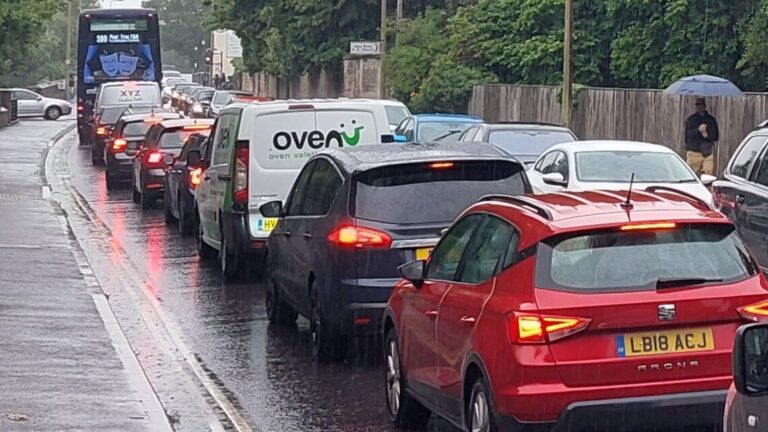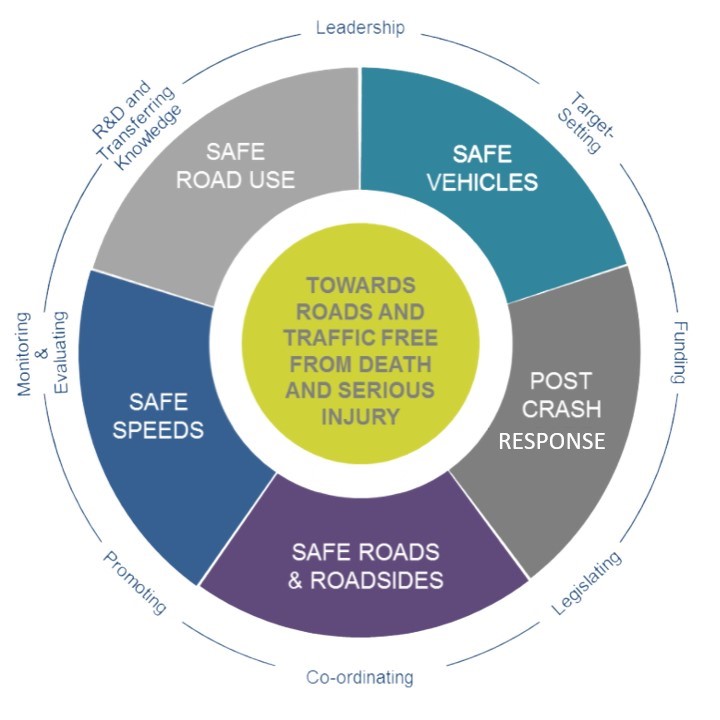Getting places is a vital part of our lives: to shops, schools, work and more. But it seems to be getting harder, whether you walk, cycle, drive or use public transport. What are the problems, and more importantly, what are the realistic solutions?
Getting places is a vital part of our lives: to shops, schools, work and more. But it seems to be getting harder, whether you walk, cycle, drive or use public transport. What are the problems, and more importantly, what are the realistic solutions?

We all need to travel, but things have changed in the last several decades. Cars have given many people the freedom to travel further, but we’ve used that freedom to build things further apart, like out-of-town shopping centres and low density housing with no local shops or facilities.
This wide spacing and reliance on cars has led to more need for travel, and rising congestion on our roads, particularly in old towns and cities which can’t be rebuilt. Where hundreds of billions were spent on roads, lack of investment has seen bus and train services fall behind, and the ‘spreading out’ and high traffic has made walking and cycling less attractive – leading to children’s freedom being lost, low physical activity and health problems.
Create Streets’ 2024 report ‘Move Free’ provides a great perspective on this.
We need to move on to a more inclusive transport system – one that works for people who can’t, or can’t afford to, drive, one that doesn’t stifle itself in congestion, and one that causes less damage to people and planet.
This does not mean that cars have no place, but that by providing more and better options, and tilting the table back in their favour, people will need to use and own cars less, and for the tasks to which they are best suited.
This will free up space in our towns for people who need it, clear the air, and improve our health.

1. Climate change. Transport is the largest sector in the UK’s greenhouse gas emissions.[Read more]
2. Road Casualties. 5 people are killed and 76 seriously injured on UK roads every day. [Read more]
3. Physical inactivity. Often caused by dangerous or unpleasant street environments, inactivity causes far more deaths and health problems than direct casualties and costs the UK £7.4 billion a year. [Read more]
4. Air pollution. Air pollution from engines, tyres and brakes causes lung and heart disease, and thousands of early deaths each year. [Read more]
5. Congestion. Traffic congestion – jams – has been a persistent problem in our towns and cities for decades. It has been identified as a major threat to the Oxfordshire economy. [Read more]
6. Public Space. Over a third of space in some cities is used for car movement and parking, limiting space for housing, jobs and enjoyment. [Read more]

7. Inequalities. The benefits of private cars go mostly to the wealthy, but pollution, casualties and social exclusion are suffered mostly by the poor. [Read more]
8. It’s going to get worse (if we do nothing). 100,000 new homes are planned to be buiilt in Oxfordshire, electric vehicles will increase traffic and road building adds more traffic.
UK transport has focused on the private car for 60 years, so it can be hard to see the alternatives. But by looking at examples across the world and thinking about their practicality and pros and cons, we can see how a more effective and positive transport system can be built, step-by-step, by:
Our alternative starts at our front doors, by enabling more daily activities to be possible without a car, and with so many people not being able to afford a car this is the only fair approach. This means:
· Bringing key facilities in walking range of people’s homes: shops, pharmacies, post offices, green spaces, cafes, etc. Find out more about walkable ’15-minute’ neighbourhoods or cities..
· Making the streets safe to walk or wheel for all ages and abilities, with less and calmer traffic. Find out more about low traffic, liveable neighbourhoods.


Our transport alternative focuses on making options available to people to avoid the expense and harms that come with a car.
1. Improved walking and wheeling routes. Virtually everyone walks and or uses an assisted equivalent. This option needs to be as easy as possible, with smooth, wide and unobstructed pavements, and easy crossings. [link to more coming]
2. Cycling connections and parking. Cycling multiplies range and carrying capacity, and 87% of adults know how to cycle (only 75% can drive) and 71% of trips are under 5 miles. For cycling routes to be successful there are 5 criteria identified by the Dutch in the 1970s and re-proven many times since: routes must be coherent, direct, safe, comfortable and attractive. [link to more coming]
3. Better public transport. Buses, trains and other public transport are an essential part of a future system, working with walking and cycling to move people across the city, county and country. Investment in these modes needs to provide reliability, quality on-board and good interchanges, as these are an essential part of most longer journeys. [link to more coming]
Road collisions resulting in death and serious injury are not inevitable, and across the world, governments, local authorities and police forces are adopting an approach that tackles them with a ‘systems approach’, considering and eliminating the causes of injury and death, in the same way that is used in other industrial and transport settings (e.g. air and rail).
The understanding that road deaths can be reduced towards zero is called ‘Vision Zero’. The common system approach to this is called the ‘Safe System’ and identifies five areas where the risk of harm to humans can be reduced (see graphic).
Oxfordshire County Council committed to Vision Zero in June 2022, with the target of reducing road deaths and serious injuries 25% by 2026, 50% by 2030 and to zero by 2050.

Even with more and better options available, kicking a 50-year habit is difficult. In Milton Keynes and Stevenage, where good walking and cycling networks were built into the towns from the start, extensive road networks also made it easy to drive and now they suffer the same traffic jams as other cities.
So, action to change people’s transport choices will be required. An analysis of 800 peer-reviewed studies (also available as a more readable article) showed that the most effective interventions involved direct or financial measures, such as traffic filters, parking restrictions, congestion or emission charges which both reduced car use (push) and improve public or active transport through funding and reduced traffic (pull).
For Oxford, reducing the decades old traffic problem is essential, so the Central Oxfordshire Travel Plan includes strategic Traffic Filters, a Zero Emissions Zone and Workplace Parking Levy – all planned since 2015. These will reduce traffic, pollution and road casualties on main roads.
For residential areas, ‘Low Traffic Neighbourhoods’ make residential streets safer for people walking, wheeling and cycling, and block dangerous and polluted ‘rat-runs’, without preventing people using cars or vans when they need to.